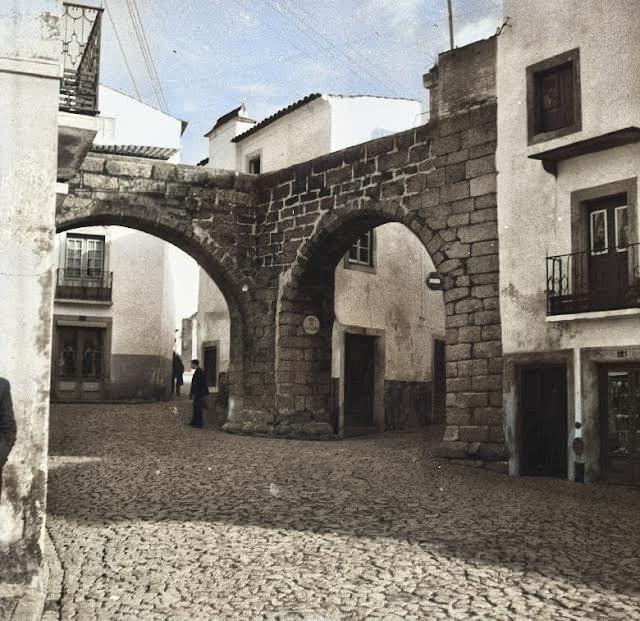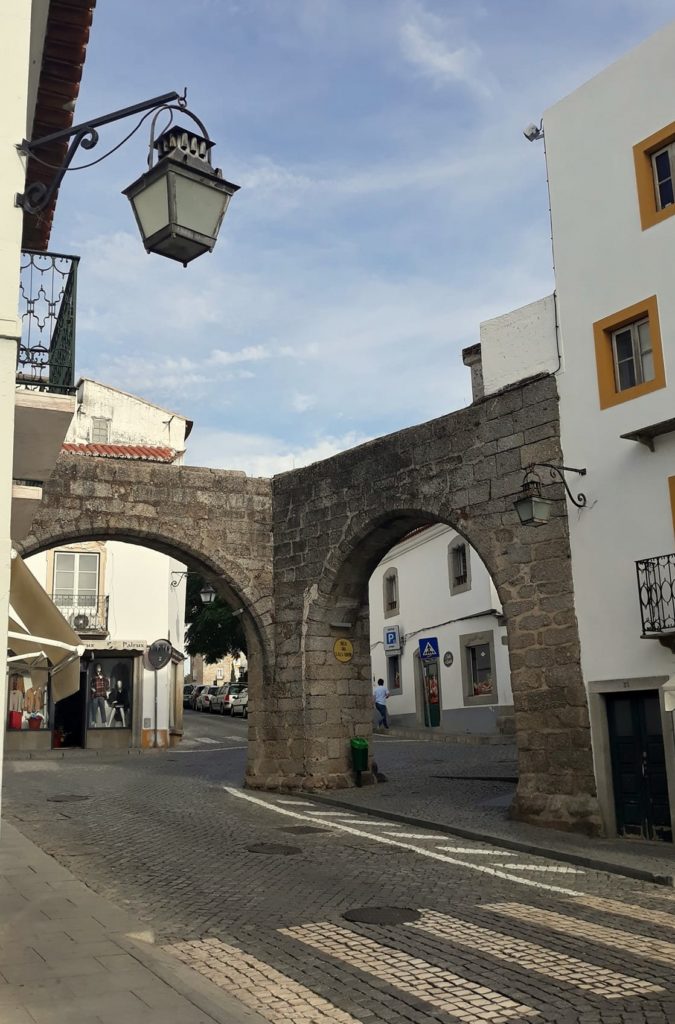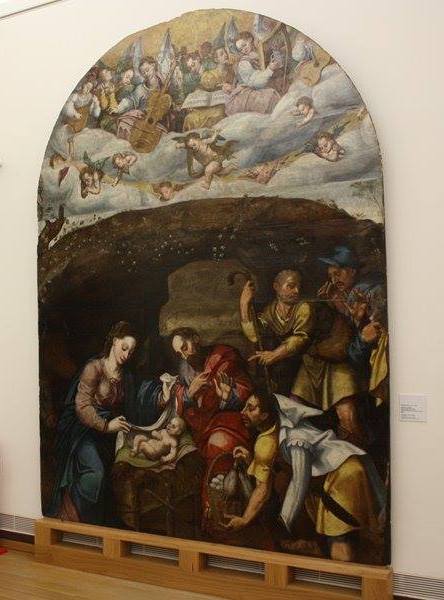As many early modern cities did, so did Évora have its areas where certain trades were concentrated, arranged throughout specific streets our squares. As we still see today in many of Évora’s buildings the ground floor of most of them in the nowadays historical centre streets were shops where goods were sold, or services were provided to the city’s inhabitants or travellers passing by.
One such case of a concentration of trades in a specific area, in this case a small square, is what happens in the Largo da Porta Nova throughout the sixteenth century. Sometimes, when locating where a specific musician or composer lived one often forgets to take a look what who were their neighbours and, thus, the soundspace where we would return every day from his musical duties.
The case of Évora’s Porta Nova square seems to present an interesting mix of trades and characters in the city’s soundspace, concentrating artists of various kinds as well as other craftsmen.
The Largo da Porta Nova (the New Gate Square) takes its name from one of the city gates during the Medieval period. The term “new gate” referring to the oldest wall of the city, a new gate opened in the wall, appears around 1340 (Beirante, 1995: 46). This square kept its name until 1869 when it was renamed after Luís de Camões, the famous Portuguese figure of the sixteenth century (Almeida, 1934: 60).

There was also a street of the same name that connected the Porta Nova square to the nearby Convent of São Domingos. This reference appears in 1542 (Almeida, 1934: 60).This is nowadays the José Elias Garcia street, which connects the João de Deus street (formerly Rua Ancha) to the Cândido dos Reis street (formerly Rua da Lagoa).

In both these streets we will find a significant number of both musicians of the Cathedral (mostly in Rua da Lagoa), as well as large concentration of string instruments makers (in Rua Ancha) neighbouring these artists at Porta Nova.
Here we find a singer, Marco António, that had personal relations with a family living at Porta Nova. Together with Alonsa Rodríguez, he was godfather to Pero, baptised at the Cathedral on 15 March 1585, whose parents lived in the Rua do Vasques, at Porta Nova (Espanca, 1948: 148). We were unable to trace the location of this street nor if its name changed over time.
One famous artist that lived and had his workshop at Porta Nova was the painter Francisco João. João was active in Évora during the second half of the sixteenth century and was a well-known artist in the city. He had at least three children from his wife Catarina Coelho. His social relationships are well-expressed in the number of baptisms and weddings he was both godfather and witness (Espanca, 1947: 146-147). As a resident in the area under the jurisdiction of the parish church of Santo Antão, all three of João’s children were baptised at this church and he also was godfather to several baptisms and witnessed weddings there during the period the composer Manuel Mendes (c.1547-1605) was chapel master of the Collegiate, following his arrival at Évora in 1575 accompanying the second arrival of Cardinal D. Henrique as Archbishop of Évora.
Francisco João witnessed the wedding celebrated at the Cathedral on 18 July 1574 between André Dias and Inês Fernandes, his neighbours at Porta Nova (Espanca, 1947: 147). On 9 September 1591 he was godfather of Maria, daughter of his neighbours at Porta Nova Diogo Nobre and Isabel Rodrigues, who was baptised at the Cathedral (Espanca, 1947: 148).
Túlio Espanca stated that Francisco João had a high statute among his contemporaries as result of his artistic merits or his family ties. The historian stressed that the painter had slaves in his household which was result of a certain social importance (Espanca, 1947: 148). Francisco João died in 1595 and was buried by the Brotherhood of the Misericórdia on 14 January of that year (Espanca, 1947: 195).

Brás de Azevedo, a stonemason (pedreiro), lived at Porta Nova. On 19 February 1602 he witnessed in the Cathedral the marriage of António Fernandes and Helena Dias. He died three years later, being buried by the Misericórdia on 18 January (Espanca, 1948: 211). Another craftsman, the blacksmith João Fernandes, also lived in the Rua Ancha, neighbouring the Porta Nova. He died on 18 May 1613 and was buried in the nearby Dominican convent (Espanca, 1949: 210). They were neighbours of Brás Dias, a locksmith (serralheiro) who lived at Porta Nova in 1615.
BIBLIOGRAPHY
Alegria, J. A. (1973). História da Escola de Música da Sé de Évora. Lisboa: Fundação Calouste Gulbenkian.
Almeida, C. (1934). Ruas de Évora. Subsídios para a explicação dos seus nomes. Évora: Grafica Eborense.
Beirante, A. (1995). Évora na Idade Média. Lisboa: Fundação Calouste Gulbenkian.
Caldeira, S. (2016). Gloria Angelical. In Conde, A. F., & Gouveira, A. C. (Eds.). Do Espírito do Lugar – Música, Estética, Silêncio, Espaço, Luz. Évora: Publicações do Cidehus. https://books.openedition.org/cidehus/2162/
Espanca, T. (1948). Alguns artistas de Évora nos séculos XVI-XVII. A Cidade de Évora, 15-16, 131-287.
Espanca, T. (1949). Miscelânia Histórico-Artística. A Cidade de Évora, 19-20, 173-234.
Espanca, T. (1947). Notas sobre pintores em Évora nos séculos XVI e XVII. A Cidade de Évora, 13-14, 109-213.
Luís Henriques is a PhD candidate in Musicology at the University of Évora and researcher in training at the University of Évora branch of the Centre for the Study of Sociology and Musical Aesthetics, based at the NOVA-FCSH.

